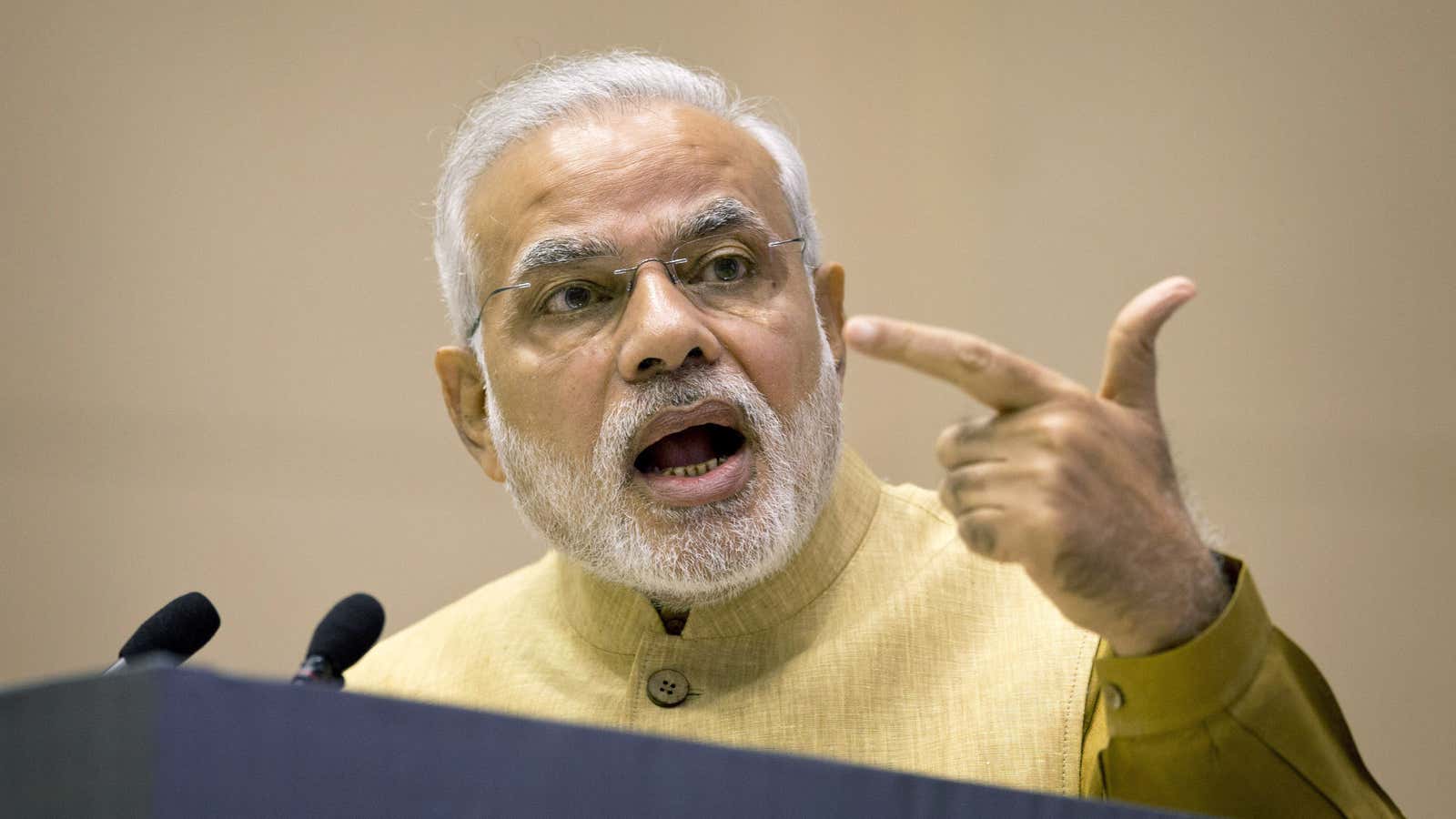Do you know Hindi? If you want to understand Narendra Modi’s speech at the UN today, you better learn the language quickly.
India’s prime minister prefers speaking in Hindi, and with this speech and other public appearances since he has been elected, he is ensuring that Hindi earns its rightful place as a recognized world language. Not only does Modi prefer speaking in Hindi with visiting foreign dignitaries, but he has encouraged Indian diplomats to start using Hindi with their counterparts.
The Indian government counts more than 400 million speakers of Hindi or a Hindi dialect, which makes Hindi the fourth most prevalent language in the world after English, Spanish and Chinese. Yet it’s still not one of the United Nation’s official languages. Visitors to world landmarks from the Smithsonian in DC to the Louvre in Paris to the British Museum in London have a choice of languages from which to explore and understand collections, but they won’t find Hindi (or Bengali or Punjabi or any other Indian language). The presumption is that an Indian visitor to these places would know English—or at least the majority would. And that is probably true.
According to the Indian government, 28% of Indians speak or understand some English—that’s roughly 350 million people. They mostly belong to India’s elite, and are the ones traveling around the world and moving outside India’s borders. Because of this, neither the Louvre, the British Museum nor the United Nations feature Hindi as an official language.
They aren’t alone. Jet Airways and Indigo, India’s two largest private airlines, have websites that are only in English. It’s the same with Flipkart and Amazon, India’s two largest online retailers.
Hindi is not entirely neglected, though. India’s state airline, Air India, and government-owned public sector banks have robust Hindi (and regional) language websites. India’s popular TV and news channels are all in Hindi. Bollywood rules Indian cinema, and the official language is Hindi. A large portion of India prefers Hindi or any of the regional languages to English.
It’s that India that Modi represents at the United Nations.
English has come to connote development in India—and there’s no doubt the growth of India’s IT industry has been helped by the large English-speaking population.
When visiting India, China’s President Xi noted that India is the world’s back office, and China is the world’s factory. But Modi doesn’t want to be just the back office. Modi wants “Make in India” to be a global mantra. To be a global factory, India doesn’t need to know English. Japan, Taiwan, South Korea and China have all comfortably grown a manufacturing base without functioning in English. Modi knows that, and he knows that if “Make in India” is indeed to become a mantra, then the one billion Indians who don’t speak English will have to be part of the global Indian factory.
By speaking in Hindi at the United Nations, with global leaders, Modi is showing a confident India. He is bringing to the table all Indians, on their terms.
Last century, Nehru and Gandhi spoke in English to enlighten the world about India. In 2014, Modi speaks in Hindi to do just the same.
